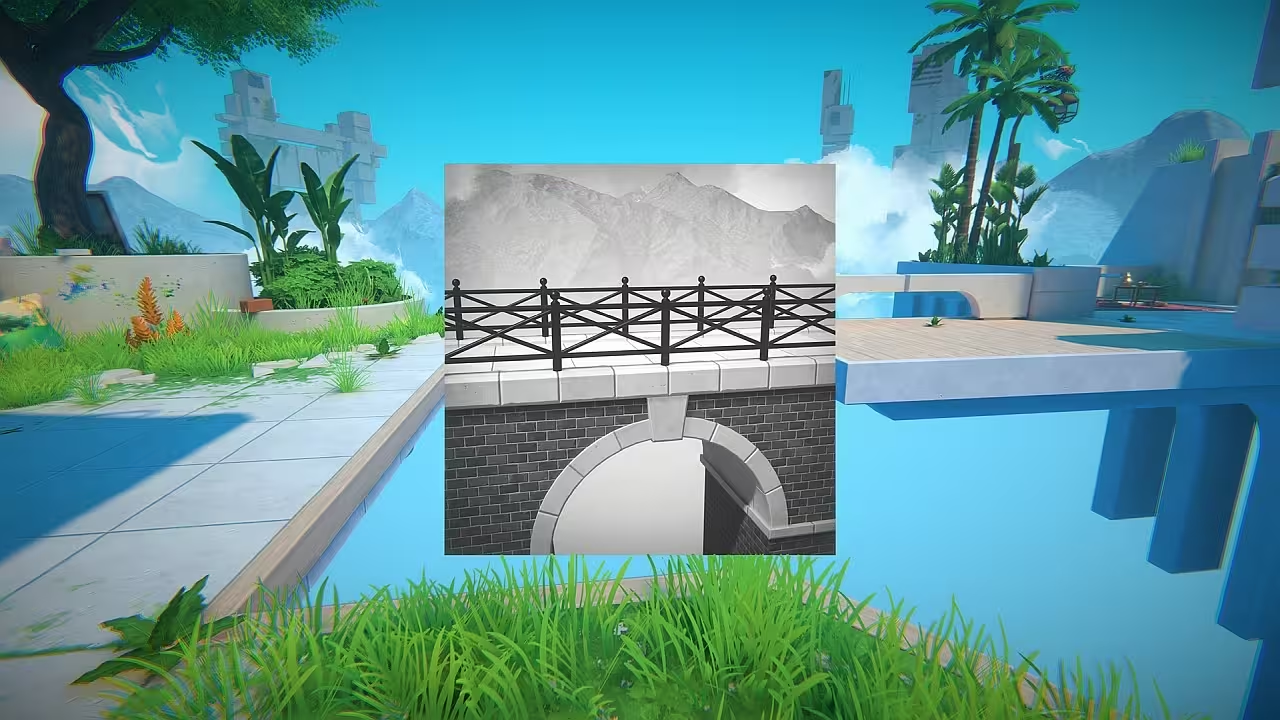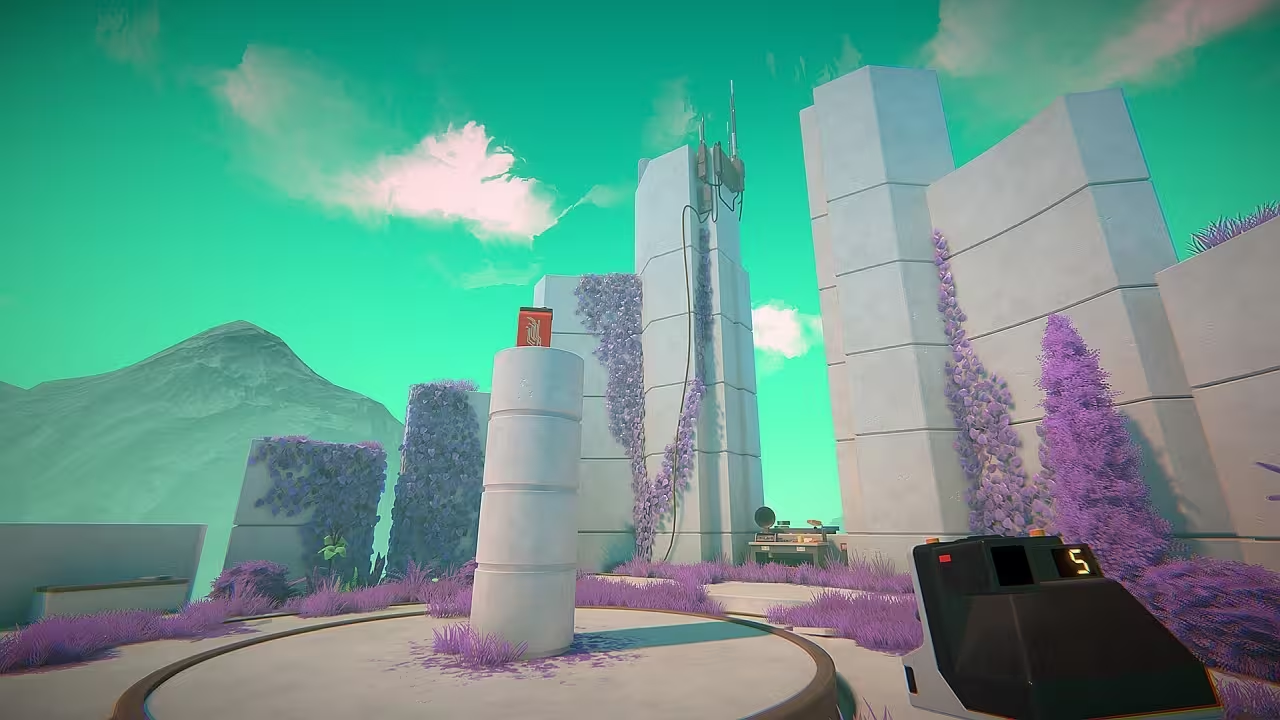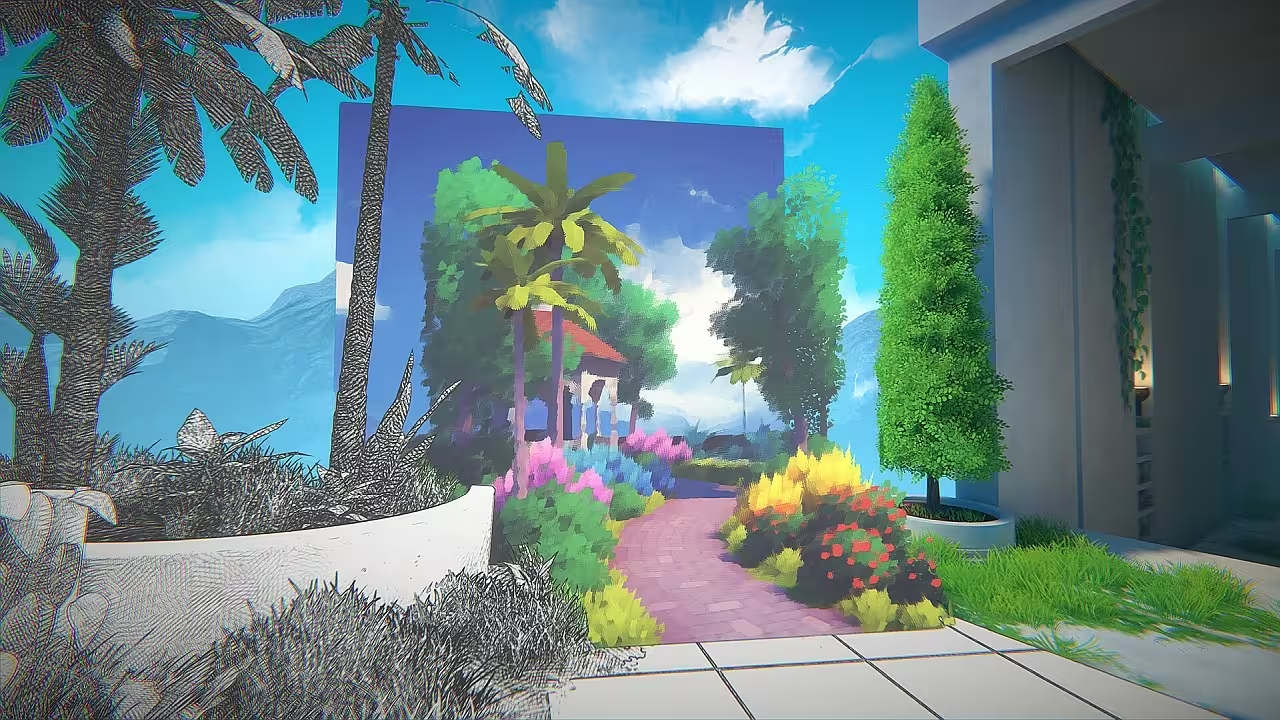Switch
PC
PS5
Xbox Series
It was the summer of 2023 that Sad Owl Studios gave Viewfinder to the world. A rarefied statement, but one worth making, as Viewfinder is a gift. The game was marketed as a mind-bending puzzler, riffing on the very concept of perspective and reality, and that it does with aplomb. Those who took a chance on it would find their minds thoroughly melted, with the optical illusions often a step too far for their spatial awareness in the first instance; or perhaps they’d just stare at a wall for twenty minutes wondering how a 2D photo became a 3D bridge. Each player who finished it will have a different tale to tell about the moment the mechanics truly clicked, whilst those who are picking it up now on the Nintendo Switch are in for a treat that feels tailor-made for handheld play.
I’m going to be honest with you; I approached this port with the appropriate dose of scepticism. We’ve all seen what happens when high-fidelity games from PC or the PS5 try to squeeze themselves onto Nintendo’s aging tablet. Often it involves a lot of blurry textures and frame rates that dip into the single digits, making a difficult game an exercise in frustration. However, playing through Viewfinder on the Switch highlights that sometimes, art style and strong mechanics triumph over raw horsepower. Yes, the resolution is lower, and the crisp edges of the brutalist architecture are a little softer here, but the magic remains intact.

So, what is it?
Imagine you are holding a Polaroid picture of a building. In the real world, that’s just a piece of paper. In Viewfinder, you can hold that photo up against any part of the world you choose, in any orientation you want, release the shutter button, and suddenly that 2D image is stamped into the 3D reality in front of you. It’s not just a texture; it’s geometry. You can walk into the photo you just placed. If the photo contained a battery you needed, you can now pick up that battery. If it was a picture of a bridge, you can now cross a gap that was previously impassable. It is a mechanic that feels like magic, similar to the first time you fired a portal gun in 2007. It floors you, it really does.
One example from my playthrough perfectly encapsulates the "aha" moment this game provides in spades. I was stuck in a level, an aesthetically pleasing mix of concrete walls and lush, potted greenery. I needed to power a teleporter to leave the area, but the battery was behind a cage I couldn’t pass. I didn’t have a key. I didn’t have a crowbar. What I did have was a picture of the sky. Just a blue sky. It seemed useless. I spent ages running around, looking for a hidden switch. Then, it hit me. I held up the photo of the sky and placed it over the cage wall. The photo of the sky overwrote the reality of the cage. The wall was gone, replaced by empty blue space. I walked through the hole I had literally cut into the universe and grabbed the battery. I was annoyed it took me quite so long to work it out, but ultimately the solution was elegant and made me feel warm and snuggly.

It’s moments like this which make me remember why I love puzzle games. Just like figuring out a boss pattern in Dark Souls, there is a specific language to Viewfinder, a fair way to solve every problem no matter how mystifying or downright irritating it is at first. You aren’t learning to dodge or parry, but you are learning to look at the world not as a fixed space, but as a canvas that you can tear up and rearrange at will. Ultimately the game isn’t hard in the traditional sense, merely a puzzle where the pieces are made of your own perception. The challenge will vary depending on how your mind works, what your spatial awareness is like and how experienced you are at games of this ilk.
The game gives you this power gradually. You start by finding photos, then you find the camera itself to take your own photos, and eventually, you encounter photocopiers. Yes, photocopiers. If you have one picture of a battery, that’s good. But if you need three batteries to power a door? You pop that picture in the scanner, hit the button, and now you have multiple copies. You can spawn infinite batteries. It creates a gameplay loop that is incredibly satisfying: assess the problem, check your resources, manipulate reality, and execute the solution.

But what happens when you mess up? What if you accidentally place a photo of a brick wall directly over the teleporter you need to exit the level, deleting it from existence? In many games, this would be game over. In Viewfinder, you simply rewind. Holding the Y button spools time backward like an old VCR tape. You watch your mistakes undo themselves, the photo peels back off the world, and you are back to where you were five seconds ago, ready to try again with a different approach. This lack of punishment encourages experimentation. You can try the wildest, stupidest ideas just to see if they work, safe in the knowledge that you can just hit rewind if you accidentally cut the floor out from under your own feet and fall into the endless void. It turns the level into your own personal sandbox, like a puzzle version of Hitman.
The narrative that pulls you through these puzzles is surprisingly touching. You are exploring a simulation created by a group of researchers who were trying to solve the climate crisis. As you delve deeper, you find audio logs and sticky notes left behind by these people, detailing their hopes, their interpersonal dramas, and their failures. You are accompanied by a digital cat named Cait. Cait is delightful – a floating, grinning Cheshire Cat distinct to this digital world who offers encouragement and lore. He doesn’t pester you like some gaming companions (I’m looking at you, Navi), but rather feels like a friend guiding you through a lonely, beautiful world.

Visually, the game is a marvel. The art direction leans heavily into solarpunk and brutalism according to the developers – lots of stark concrete shapes softened by vibrant, overgrown plants and soft lighting. On the Switch, this translates well. The distinct colour palettes of the different hubs help with navigation, and the stylised look means the lower texture resolution of the port isn’t a dealbreaker. It runs smoothly for the most part, targeting a 30fps cap that feels consistent. I did notice a few stutters when placing particularly complex photos that required the game engine to recalculate a lot of geometry at once – specifically in the later optional levels – but it never hindered the experience. It’s a trade-off I’m willing to make to play this curled up in bed.
There is a distinct joy in the optional content as well. Scattered throughout the levels are collectables – rubber ducks, mahjong tiles, and planets. Finding them requires you to look at the levels from angles you might not have considered. It forces you to stop and do something different to what your muscle memory wants after playing the game for a while: for example, stop and take a photo of a flower to place it somewhere else to create a staircase.

The game is not without its minor frustrations. Some of the later puzzles require a level of precision with the thumbsticks that can be a bit finicky on the Switch Joy-Cons. Lining up a photo perfectly to complete a circuit or bridge a gap can sometimes feel a bit twitchy, leading to moments where you think you have the solution, but the game decides your alignment was one degree off. But thanks to the rewind feature, this is rarely more than a momentary annoyance.
Comparing this to the other heavy hitters of the year, Viewfinder offers something entirely different. It’s a palate cleanser. After 100+ hours in massive open worlds like Elden Ring or the high-octane stress of competitive shooters, Viewfinder is a warm bath for your brain. It respects your time – clocking in at around 5 to 7 hours – and it doesn’t overstay its welcome. It introduces a mechanic, explores it fully, twists it a few times, and then rolls the credits before it becomes repetitive.

What we have here is a sterling port of an indie gem. The developers, and the team handling the Switch version, have done a fantastic job of preserving the wow factor of the core mechanic. It’s a game that makes you feel smart. It makes you look at the real world a little differently when you put the console down – wondering if you could just hold up a picture of a door on a solid wall and walk through it.
If you haven’t played Viewfinder yet, the Switch release is the perfect opportunity. It’s cozy, it’s clever, and it’s a technical marvel that it runs this well (albeit not perfectly) on what is essentially a handheld. Whether you’re a puzzle veteran who dreams in Tetris blocks or someone who just wants to experience a story about hope and perspective, this is a snapshot you’ll want to keep.
You can subscribe to Jump Chat Roll on your favourite podcast players including:
Let us know in the comments if you enjoyed this podcast, and if there are any topics you'd like to hear us tackle in future episodes!


